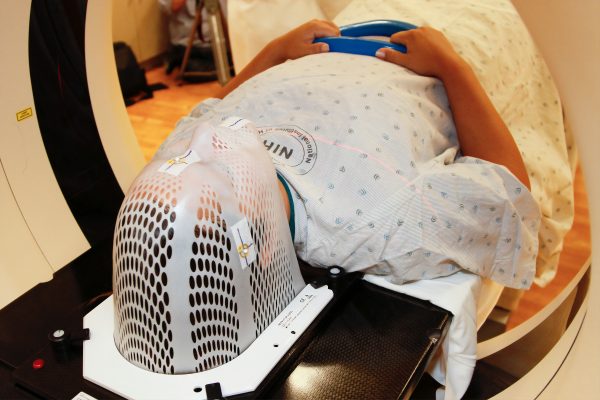by: Suhitha Kosuri
For decades, long-distance running has been advocated for its fruitful health benefits. However, the injuries that arise from this strenuous activity are often overlooked. According to the research conducted by the EECS department at UC Berkeley, approximately 79% of long-distance runners are predicted to bear debilitating knee injuries (such as PFPS – Patellofemoral Pain Syndrome). RunningCoach, a mobile health application founded and developed by Dr. Daniel Aranki, the Executive Director of Berkeley Telemonitoring, along with the EECs team, aims to increase awareness and alleviate the painful and sometimes irreversible side-effects that come from long-distance running.
The mission of RunningCoach can be better understood when the terms “cadence” and “long-distance running” are defined. Cadence is the steps per minute, and long-distance running is when an athlete runs at least five kilometers or for a one hour session per week. Why is cadence relevant? In addition to preventing knee injuries, the team at RunningCoach has hypothesized that an increase in cadence naturally intensifies cardio workouts in runners which can improve blood flow and oxygen use throughout the ventricular and vascular systems. This can ultimately prevent heart disease. After examining the results from a 2012 study on patients with heart failure and their alarming readmission rates, the telemonitoring team at Berkeley decided to get involved to decrease the readmission rates. At the recommendation of the cardiology department at the University of California at San Francisco Hospital, the telemonitoring team approached the problem from a technological standpoint to assist cardiologists in their efforts to improve precision medicine by better catering to their patients’ needs by observing the patients’ cadence patterns. Consequently, the telemonitoring team proceeded to develop RunningCoach with the intention of measuring cadence and how user-friendly the app is. Based on the extrapolation of the data gathered, the app then makes a recommendation to the runners on specific and calculated actions that they can take to increase their cadence, improve heart health and prevent injuries in the lower extremities. Based on the pilot program, Dr. Aranki’s team stepped forward in their intervention with the notion that increasing cadence by even 10% could significantly reduce the possibility of injury.
In order to measure the cadence of individual runners, we will explore the logistics of RunningCoach. RunningCoach observes and records data based on the runner’s environment, and the runner’s body composition (including the runner’s age, weight, gender and height). The second attribute includes RunningCoach’s ability to assess the runner’s goals and expected training scheme. As a result, Running Coach is directed by an exponential improvement curve that is supported by the following equation:
The components of this equation include the baseline cadence of the runner, the target cadence, the parameters, and length of the training onset. In order to test the equation, participants were selected based on the requirement that they are long-distance runners and had access to an Android smartphone. The study took place over six months and used six different subjects. From every run, the data collected included the heart rate, the speed, the battery consumption from the app, and of course the cadence. At the end of each run, subjects were encouraged to participate in a survey about the run, which included questions about how tired they were after the run, what they felt good about the run, and their experience using the application. By requiring the participants to fill out these surveys after each run, the researchers were able to garner information regarding the accuracy and effectiveness of the system. It is difficult for runners to maintain and measure their cadence without technical assistance, therefore RunningCoach notifies its users when below the recommended cadence level. One of the many experiments in this study involves the curiosity surrounding the effects of elevation/terrain on cadence. To make this experiment conducive, the team measured and analyzed the speed and cadence at every level (uphill, downhill and flat terrains). As illustrated by the graphs below, run 50 indicates a big change in speed due to elevation changes while the cadence is relatively less varied when compared to the speed. Run 52 indicates less variation between the speed and cadence based on changes in elevation. This consistent pace found in run 52 is what is desired and is an example of how RunningCoach is beneficial by making one aware of their cadence consistency.
Through this research, it has been concluded that two majors factors contribute to a decrease in the incidence of injury during long-distance running. One major criterion is the act of gradually increasing cadence during training sessions instead of having dramatic shifts in training regimens. The second criterion goes hand in hand with the first criterion, which is to maintain a stable cadence throughout a run. By doing so, runners are able to have a more balanced run by being able to conserve their energy and maintain stability.
There are other applications in the market that assist runners in keeping track of their running styles, such as Nike+, MapMyFitness, and Adidas miCoach. These applications function to enhance a runner’s experience by helping him/her understand their running technique so that they can strategize more effective workouts. However, these applications lack what RunningCoach brings to the table: the ability to show its users how to decrease the risk of injury. Additionally, RunningCoach plans on further diversifying its program by implementing a music system that will assist runners by allowing them to associate each step with each beat in a song. The harmonic intervention can be extremely helpful and assist in reaching the ideal 180 steps per minute.
The tripartite mission of this initiative is to empower runners to adopt safer running techniques, assist concerned cardiologists in providing more customized care to their patients, and build a robust database that can support the findings on the correlation between cadence and knee injuries. RunningCoach aspires to change the realm of how long-distance running is understood in the future.
Photo by Steven Lelham on Unsplash







